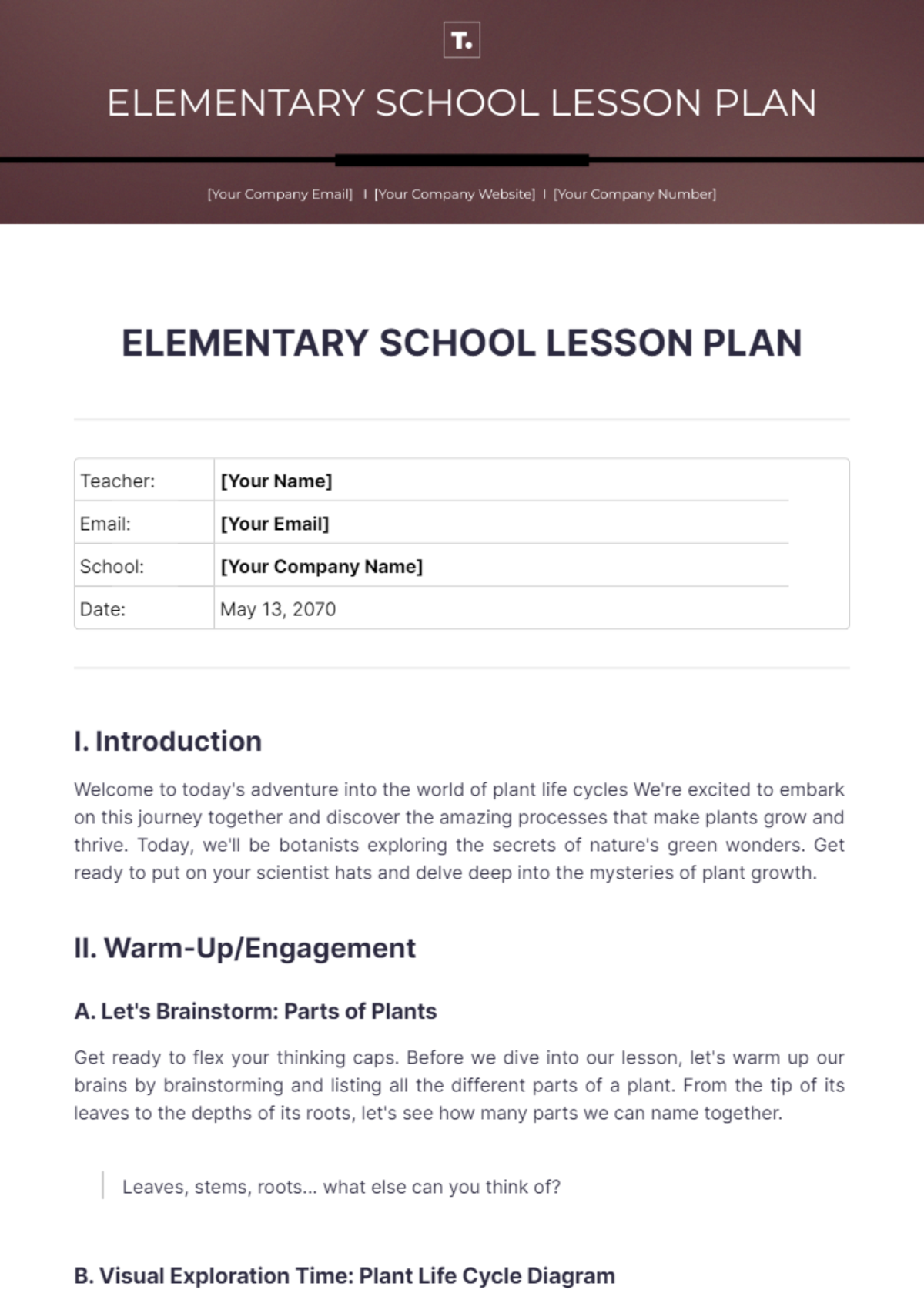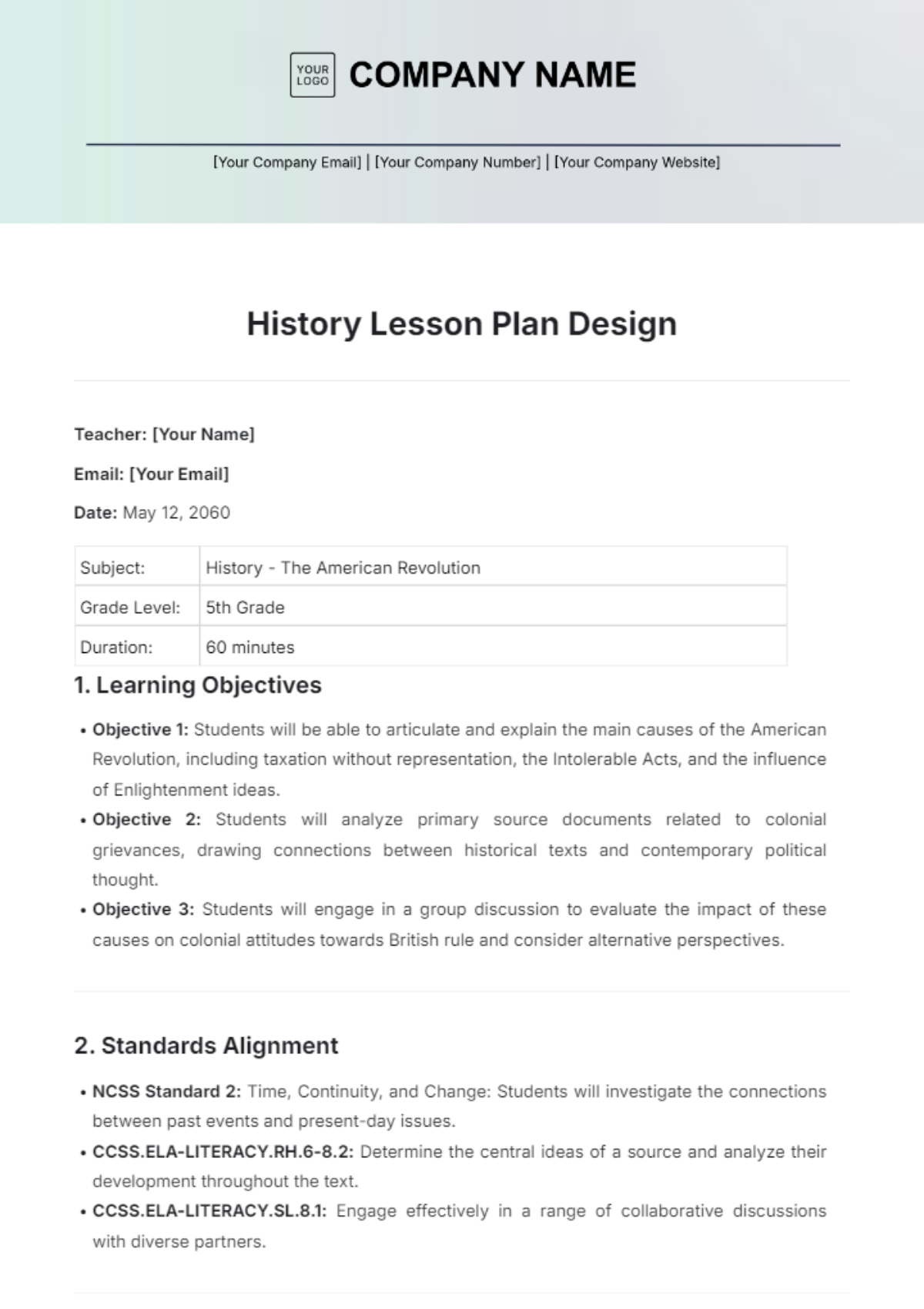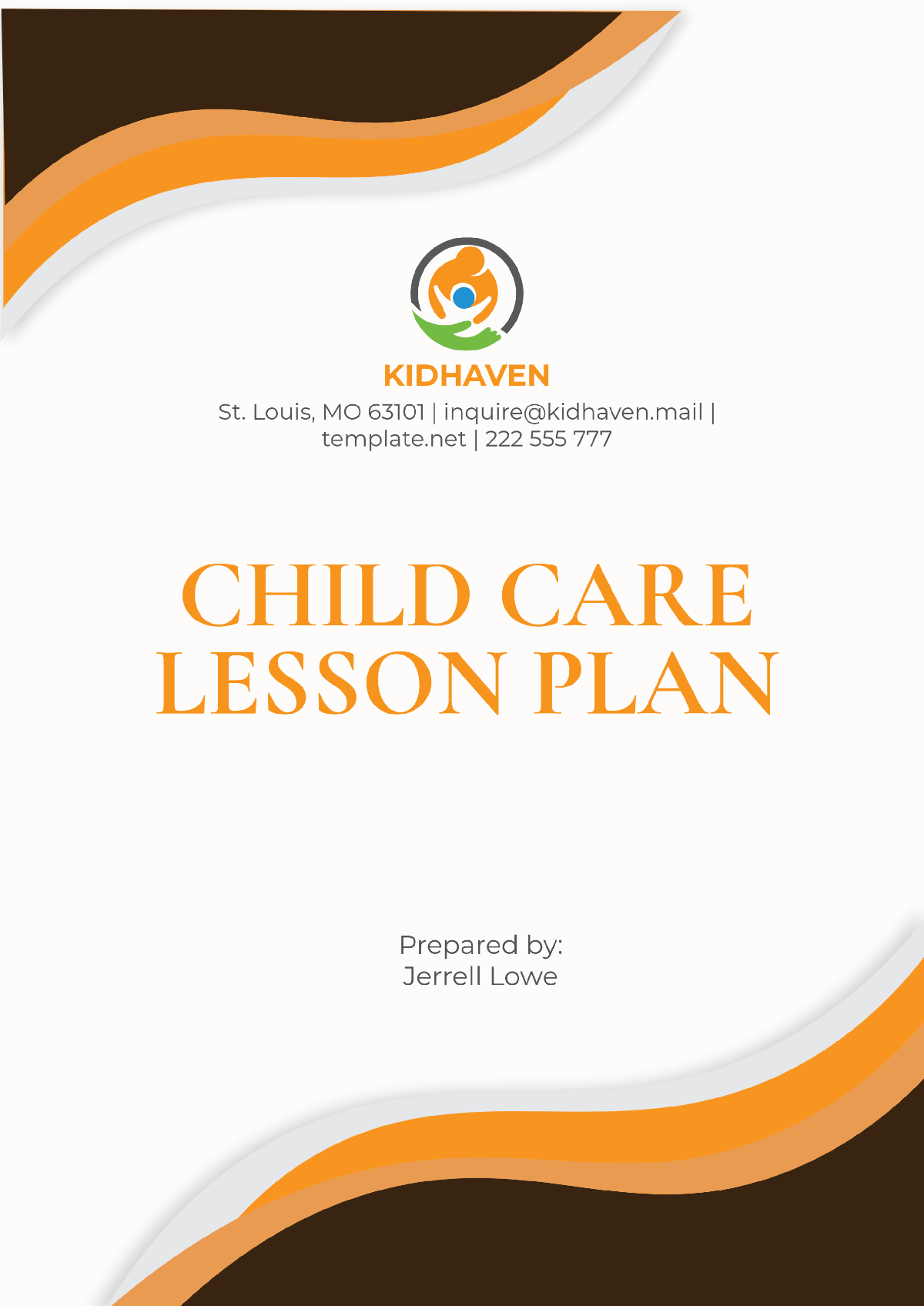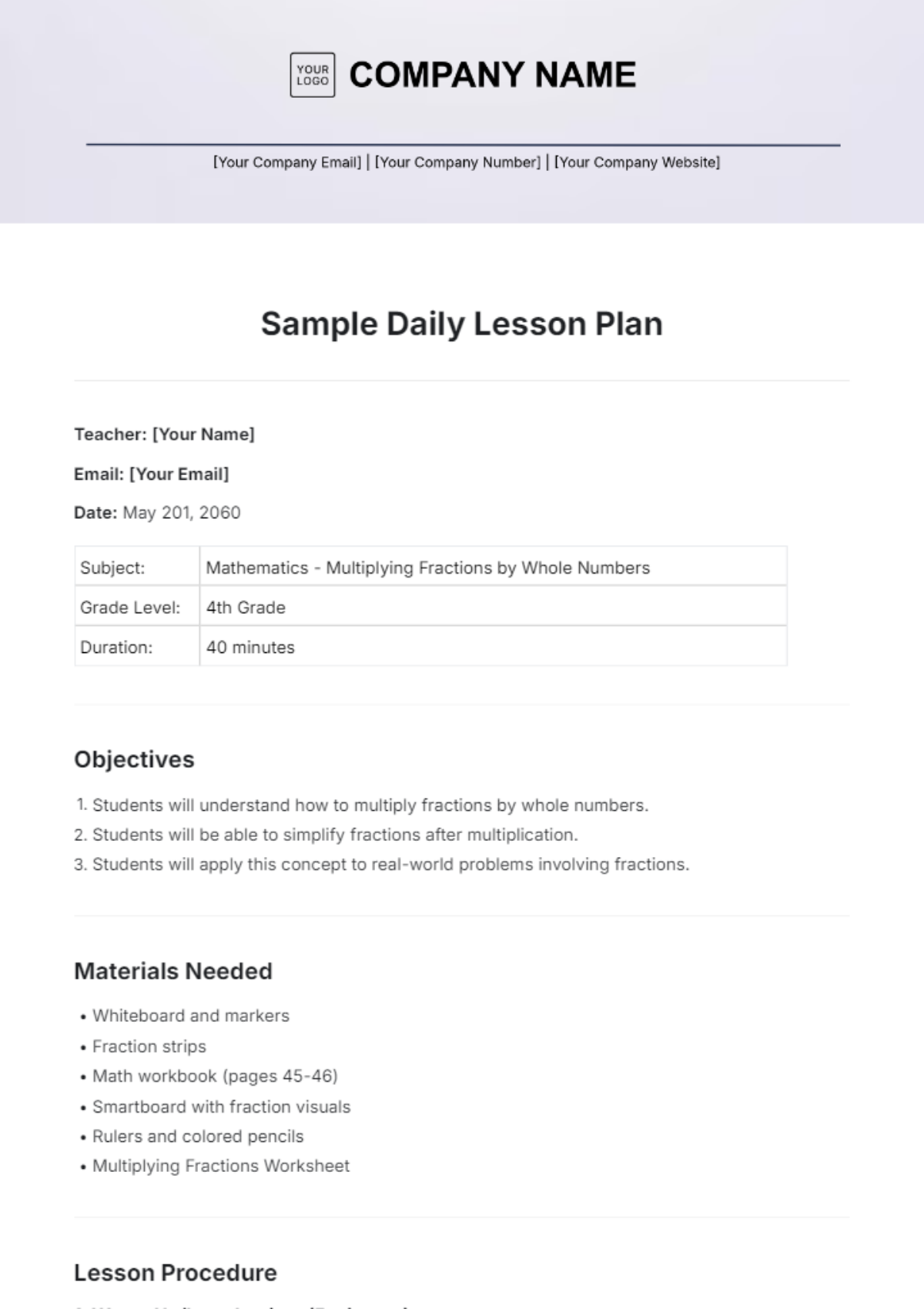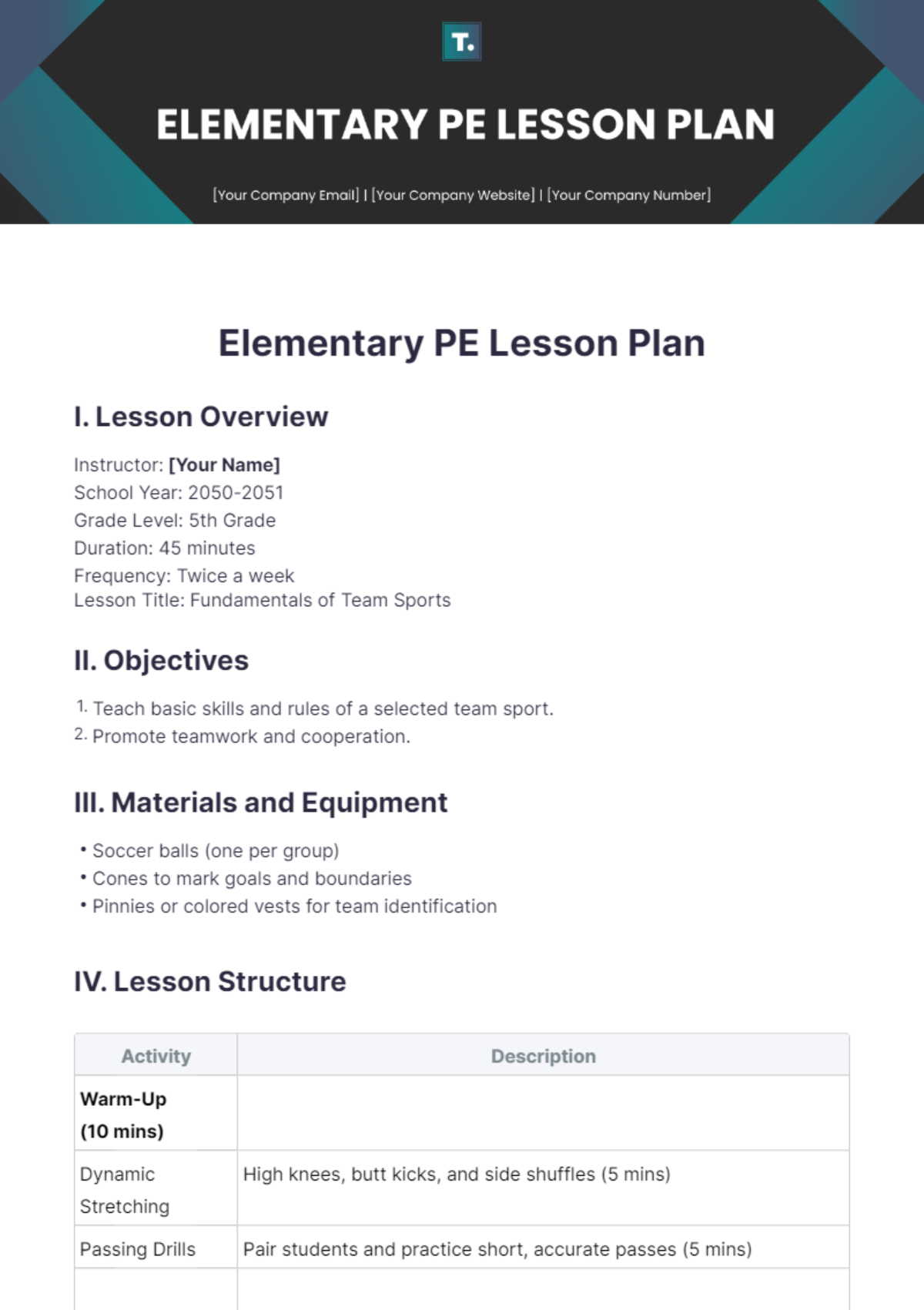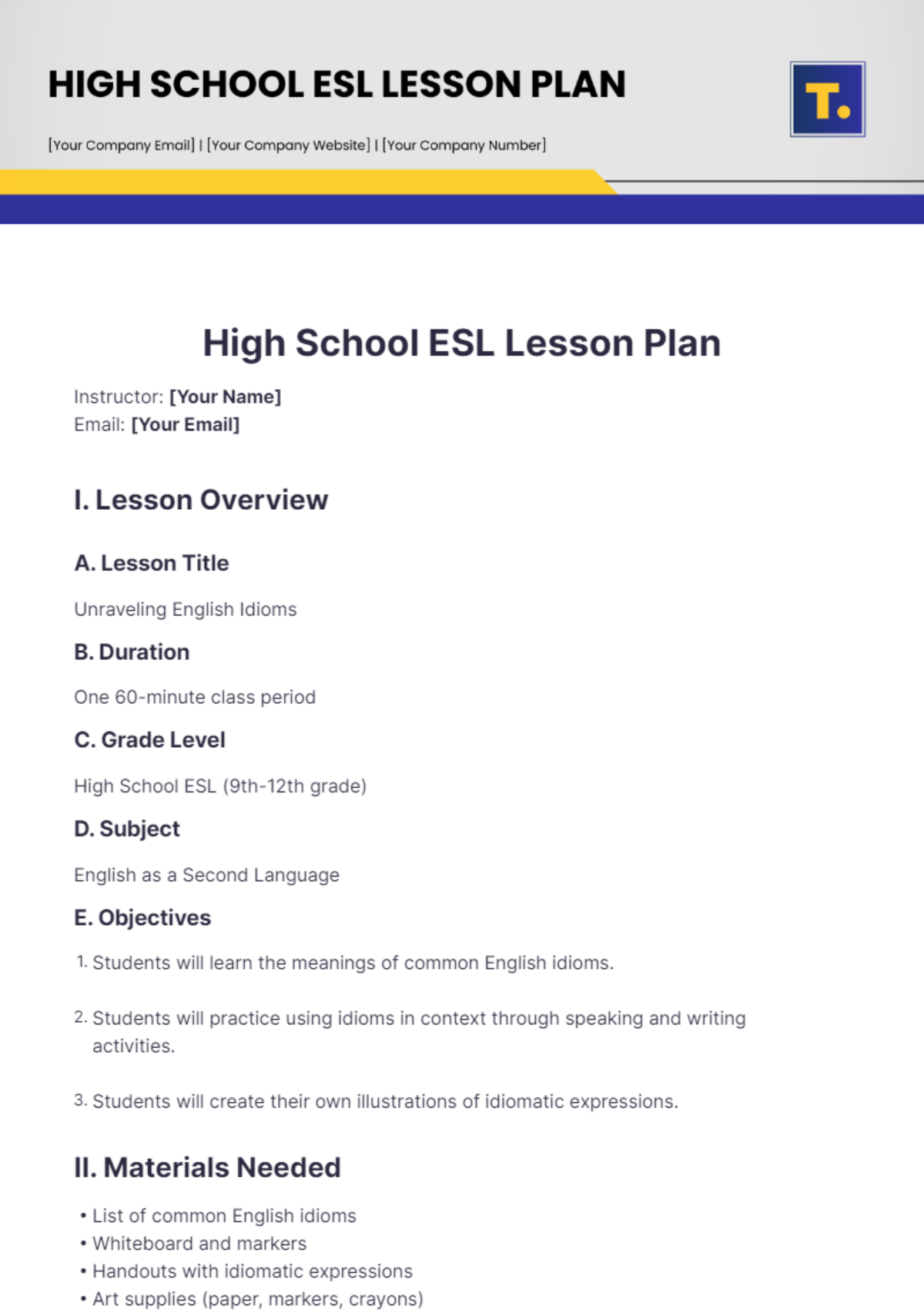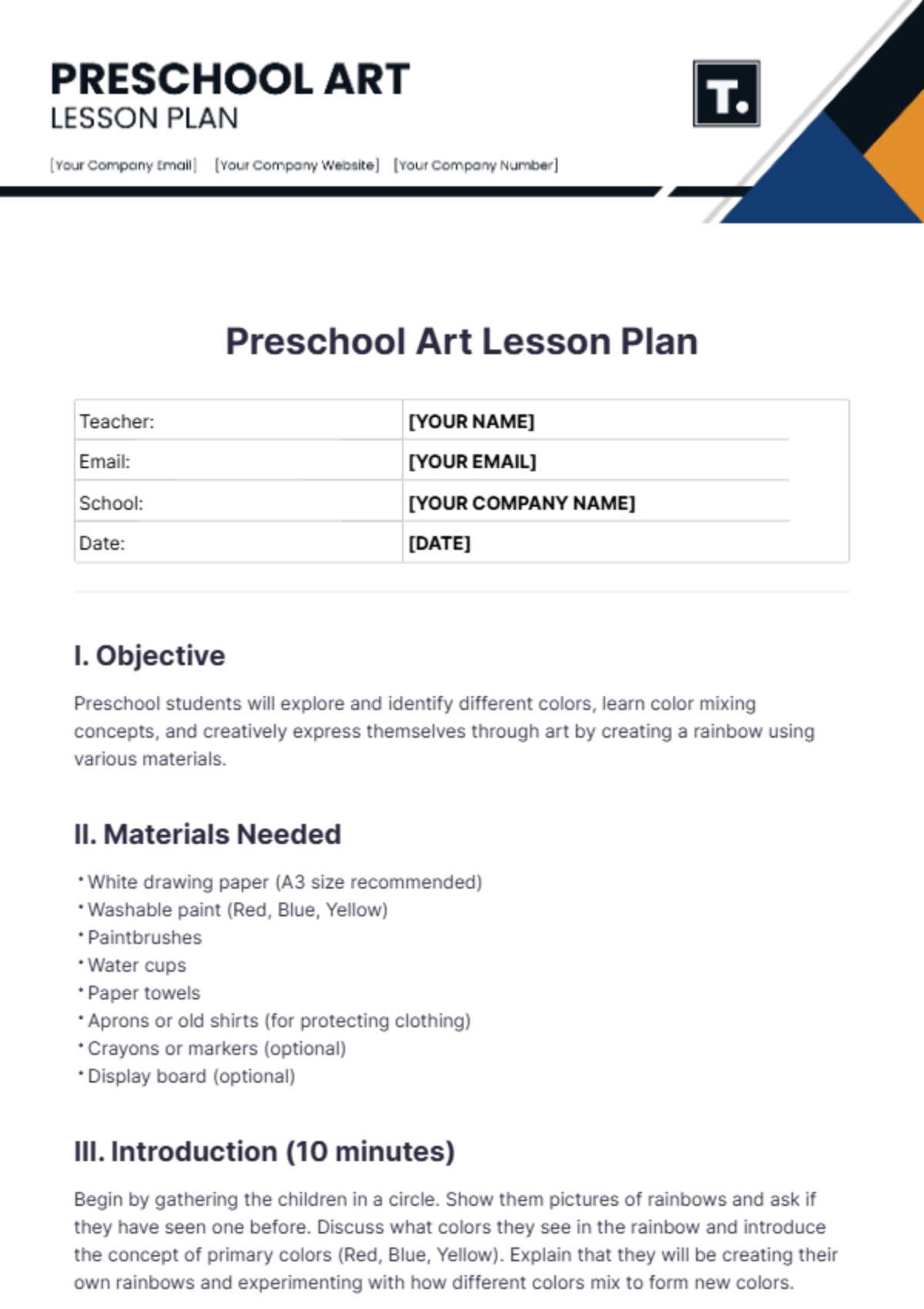Easy Lesson Plan
Instructor: | [YOUR NAME] |
|---|---|
School: | [YOUR COMPANY NAME] |
I. Lesson Information
Grade Level: | 10th Grade |
|---|---|
Subject: | English Literature |
Date: | January 15, 2050 |
II. Lesson Objectives
By the end of this lesson, students will be able to:
Analyze key themes in the selected literature piece.
Identify and interpret literary devices used by the author.
Develop critical thinking through class discussions and activities.
III. Materials Needed
Textbook: "Great Expectations" by Charles Dickens
Whiteboard and markers
Projector and screen
Notebooks and pens
IV. Lesson Activities
1. Introduction (10 minutes)
Greet the students and take attendance.
Briefly outline the lesson objectives and the agenda for the day.
Explain the importance of understanding themes and literary devices in literature.
2. Reading and Analysis (40 minutes)
Read selected passages from Great Expectations aloud or have students read in turns.
Pause periodically to discuss significant excerpts.
Ask guiding questions to encourage student participation, such as:
"What themes can you identify in this passage?"
"How does Dickens use metaphor to enhance the narrative?"
Highlight and explain the use of literary devices such as metaphors, similes, and symbolism.
3. Group Activity (25 minutes)
Divide students into small groups, each assigned a different theme or character to analyze.
Provide each group with guiding questions and specific passages to focus on.
Allow students time to discuss and prepare their analysis.
Have each group present their findings to the class, encouraging questions and discussion from peers.
4. Conclusion and Homework (15 minutes)
Summarize the key points discussed during the lesson.
Assign homework: Write a short essay on the main themes of the chapters read, incorporating examples of literary devices identified in class.
Address any remaining questions from students to ensure clarity and understanding.
V. Assessment
Assess students' understanding through:
Participation in Class Discussions:
Evaluate the frequency and quality of student contributions during reading and analysis.
Note the depth of insights shared during group presentations.
Quality of Group Presentations:
Assess the coherence, accuracy, and thoroughness of each group's analysis.
Consider the effectiveness of each group’s presentation and their ability to engage the class.
Completion and Quality of Homework Assignments:
Review the essays for comprehension of themes and literary devices.
Provide feedback on writing skills, use of evidence, and depth of analysis.

